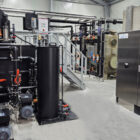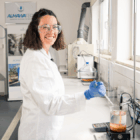The term TOC (Total Organic Carbon) refers to the total concentration of organically bound carbon in a water sample. The TOC value is a key parameter in water analysis, which is of great importance for both industrial water treatment and wastewater treatment. It serves as an indicator for the organic contamination of water or wastewater and makes it possible to monitor the quality and purity of process water, drinking water or wastewater.
In contrast to specific pollutant analyses, which record individual substances such as benzene or oils, the TOC value provides summarized information on all organic compounds contained in the water. The TOC includes both natural organic compounds (e.g. humic substances) and synthetic carbon compounds (e.g. solvents or hydrocarbons). This makes TOC analysis an important control method for many industrial applications.
Table of contents
Technical background: Components of the TOC
The TOC value is made up of several carbon fractions, which are clearly differentiated in the analysis:
Total carbon (TC):
- The total carbon content in the water, including organic and inorganic components.
Inorganic carbon (IC):
- These include dissolved carbonates (CO₃²-), bicarbonates (HCO₃-) and dissolved carbonic acid (H₂CO₃).
Organic carbon (OC):
- All organically bound carbon present in dissolved or particulate form.
Dissolved organic carbon (DOC):
- The organic carbon content that is dissolved in the water and can be separated from particles by filtration (filtration with 0.45 µm).
Particulate organic carbon (POC):
- Organic carbon compounds that are present in particulate form and are not dissolved in water.
Measuring methods for determining the TOC
TOC measurement is usually carried out by burning or oxidizing the carbon compounds to carbon dioxide (CO₂), which is then analyzed quantitatively. There are two established methods:
1. thermal oxidation (high-temperature combustion)
- How it works: The water sample is burned at temperatures of 600-1200 °C in an oxygen-rich atmosphere. The organic carbon compounds are completely oxidized to CO₂.
- The CO₂ produced is then quantified using an NDIR detector (non-dispersive infrared detector).
- Advantage: High precision and complete oxidation of all organic substances.
- Disadvantage: Energy-intensive and susceptible with heavily particle-laden samples.
2. wet chemical oxidation (UV/persulphate oxidation)
- How it works: The organic substances are oxidized by adding sodium persulphate (Na₂S₂O₈) and irradiating with UV light. This also produces CO₂, which is detected.
- Advantage: Gentler on appliance components, particularly suitable for water with a low TOC load.
- Disadvantage: Incomplete oxidation of highly stable organic compounds possible.
Significance of TOC in industrial water and wastewater technology
The TOC value is a decisive control parameter for the organic contamination of water and is used in many industrial areas for process monitoring, quality assurance and legal compliance.
1. ultrapure water and demineralized water production
- The electronics industry, pharmaceutical industry and solar cell production require the highest purity standards for water.
- Der TOC-Wert muss in Reinstwasseranlagen extrem niedrig liegen, typischerweise < 0,05 mg/L, um Verunreinigungen in empfindlichen Produktionsprozessen zu vermeiden.
- In reverse osmosisand ion exchanger systems, TOC monitoring provides an early warning of membrane damage or resin contamination.
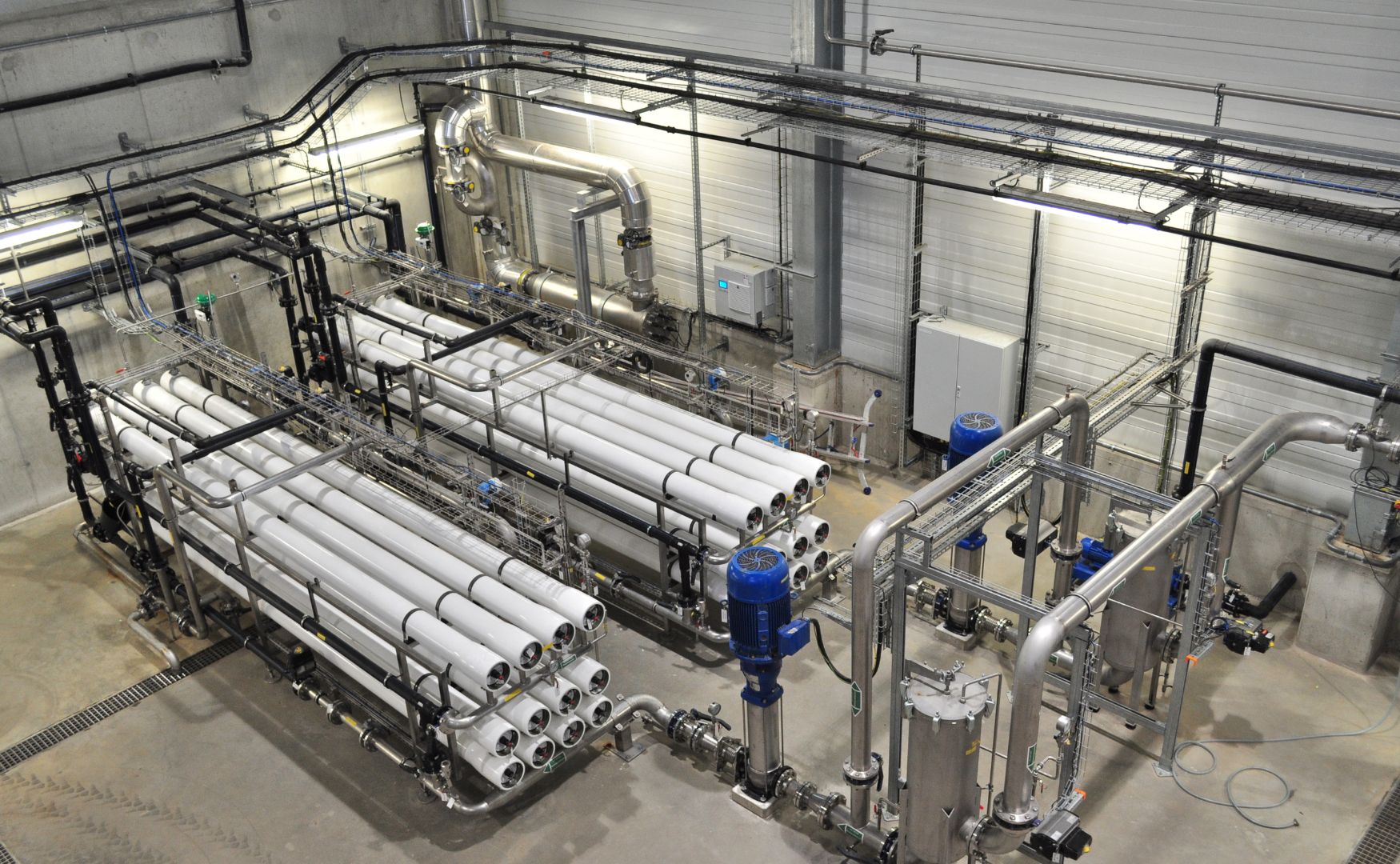
Photo: Our ALMA OSMO reverse osmosis system for producing demineralized water
2. cooling water circuits
- In cooling water circuits, organic contamination can lead to biofouling (growth of microorganisms) and corrosion.
- Regular TOC measurement helps to control the organic load and to implement necessary measures such as the addition of biocides in a targeted manner.
3. wastewater treatment
- In industrial wastewater treatment, the TOC value is used as an indicator of the total organic load.
- An increased TOC concentration indicates high organic loads that need to be broken down in biological or chemical-physical treatment stages.
- Typical TOC limits for wastewater:
- Einleitgrenzwert für die Industrie: < 20 mg/L (variiert je nach Region und Industrie).
Limit values and standards
In many industries, there are fixed TOC limits to ensure water quality:
- Reinstwasser für Pharmaindustrie: < 0,5 mg/L (gemäß USP-Norm).
- Cooling water circuits: Typical TOC limits are in the range of 1-5 mg/L to minimize biofouling.
- Industrial wastewater: TOC values must often be below 20 mg/L, depending on regional environmental regulations.
Process for TOC reduction in wastewater treatment
The reduction of total organic carbon (TOC) in industrial wastewater treatment is mainly achieved by biological processes. These utilize the ability of microorganisms to break down organic carbon compounds and convert them into biomass and carbon dioxide (CO₂). Various biological processes are used depending on the load, the composition of the wastewater and the required purification targets:
1. activated sludge process
The activated sludge process is the most widely used biological process for reducing TOC in wastewater treatment. It is based on the targeted promotion of aerobic microorganisms that oxidatively degrade organic compounds.
Functionality:
- The wastewater is aerated with oxygen in an aeration tank to provide the aerobic bacteria with sufficient oxygen.
- The microorganisms use the organic carbon compounds as a source of energy and nutrients and break them down into carbon dioxide (CO₂), water and biomass (activated sludge).
- The activated sludge is then sedimented in a secondary clarifier, where the purified water body is separated.
TOC reduction performance:
- The activated sludge process can remove 70-95 % of the TOC, depending on the wastewater composition and the hydraulic retention time.
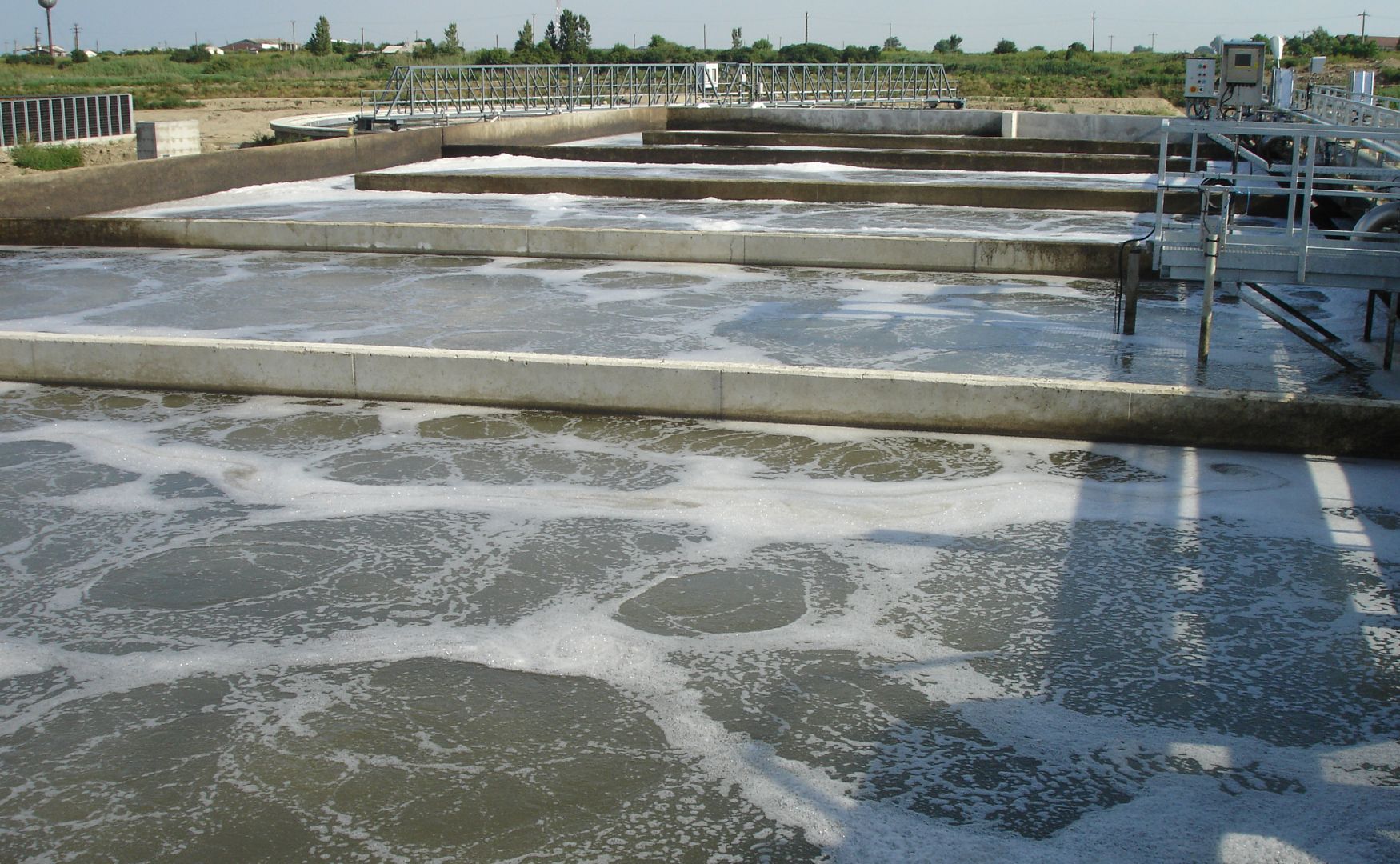
Photo: Aeration tank of our ALMA BHU BIO process
2. biofiltration
The biofiltration is another biological process for the reduction of TOC. In this process, the organic carbon compounds are broken down by microorganisms that adhere to a solid carrier material.
Functionality:
- The wastewater is passed through a filter bed consisting of materials such as sand, activated carbon, plastic carriers or ceramic materials.
- Biofilms consisting of microorganisms form on these carrier materials. The bacteria metabolize the organic compounds into CO₂ and biomass.
- Biofiltration can take place both under aerobic conditions (with oxygen) and in combination with anaerobic areas.
TOC reduction performance:
- High TOC reduction of 80-98 %, especially for wastewater with low residual organic loads.
Areas of application:
- Post-treatment of biologically treated wastewater (polishing).
- Treatment of wastewater streams with low TOC concentrations.
- As pre-treatment for reverse osmosis systems for in-house water recycling.
3. anaerobic treatment
The anaerobic treatment is a process for TOC reduction that takes place without oxygen. Microorganisms break down the organic substances under anaerobic conditions and convert them into biogas (methane and carbon dioxide).
Functionality:
- The wastewater is treated in an anaerobic reactor, e.g. in a UASB reactor (Upflow Anaerobic Sludge Blanket) or an EGSB reactor (Expanded Granular Sludge Bed).
- The decomposition is carried out by anaerobic bacteria, which convert the organic compounds into methane (CH₄) and CO₂ in several stages (hydrolysis, acid formation and methane formation).
- The biogas produced can be used to generate energy, e.g. in combined heat and power (CHP) plants to generate electricity and heat.
TOC reduction performance:
- The TOC reduction is 80-95 %, especially for wastewater with a high organic load.
Areas of application:
- Wastewater with high organic loads, such as in the food industry, beverage industry or biofuel production.
4. moving bed biofilm reactor (MBBR) process
The MBBR process combines the advantages of the activated sludge process and biofiltration. It uses mobile carrier materials that float in an aerated reactor and on whose surface biofilms grow.
Functionality:
- The carrier media consist of special plastic bodies with a large specific surface area on which the microorganisms colonize.
- The wastewater is aerated in the reactor, which keeps the carrier media in motion. The microorganisms in the biofilm break down the organic carbon compounds.
- The biomass stably adheres to the carrier material, which means that no secondary clarification is required to separate the sludge.
TOC reduction performance:
- The MBBR process achieves a TOC reduction of 70-95 %, depending on the hydraulic retention time and loading.
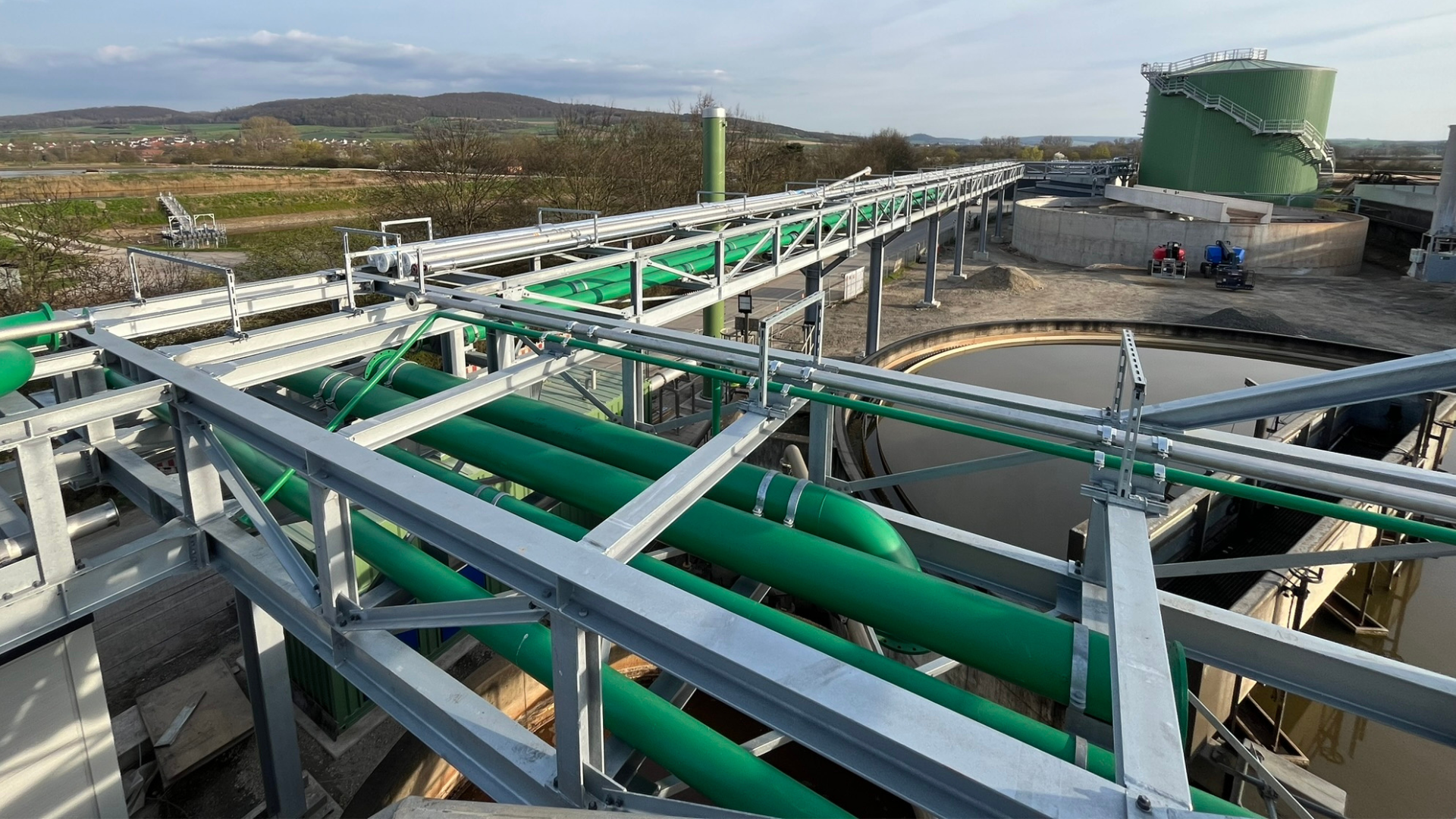
Photo: Our anaerobic biogas plant ALMA BHU GMR with sedimentation tank and biomass recirculation
Conclusion
The TOC value is an indispensable parameter in industrial water and wastewater treatment for monitoring and controlling the organic contamination of water. Its reliable determination enables compliance with quality standards, early detection of faults in treatment plants and compliance with legal regulations for wastewater discharge.
Modern measuring methods such as thermal oxidation or UV/persulphate oxidation can be used to determine the TOC precisely and reliably.
For further information on our products, please feel free to contact us at any time!




